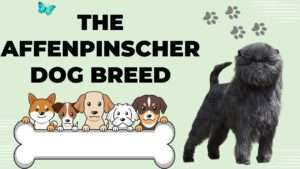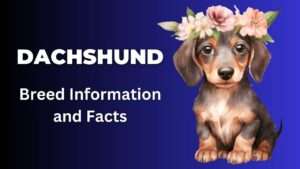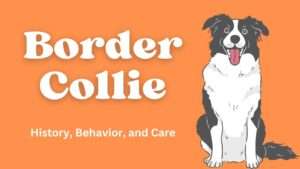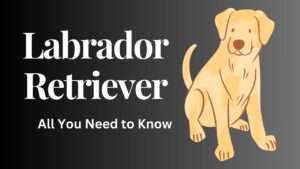In a world where loyalty meets boundless energy and affection, there’s a breed that embodies the epitome of canine companionship: the Golden Retriever. With their gentle demeanor, unwavering devotion, and a heart as golden as their coat, these dogs enchant families worldwide. But what makes them truly stand out in the world of dog breeds? Let’s embark on an exploration of all things Golden Retriever, from their history to their irresistible charm.
Contents Overview
Breed Overview of Golden Retriever
Size:
- Golden Retrievers are classified as medium to large-sized dogs.
- Adult males typically stand between 22-24 inches (56-61 cm) tall at the shoulder.
- Adult females generally range from 20-22 inches (51-56 cm) in height.
- They typically weigh between 55-75 pounds (25-34 kg).
Appearance:
- With their luscious golden coat and friendly expression, Golden Retrievers are easily recognizable.
- They have a dense, water-repellent outer coat and a thick undercoat that provides insulation in colder weather.
- Their fur can range from light to dark golden hues, often with feathering on the tail, legs, and underside.
- Golden Retrievers have a broad skull, friendly eyes, and a sturdy, well-proportioned body.
Life Span:
- On average, Golden Retrievers have a lifespan of 10-12 years.
- Proper nutrition, regular exercise, and routine veterinary care can contribute to their overall health and longevity.
- Like all breeds, Golden Retrievers may be prone to certain health issues, such as hip dysplasia, cancer, and heart conditions.
- With proper care and attention, many Golden Retrievers enjoy a fulfilling and active life well into their senior years.
History and Origins of Golden Retriever
The story of the Golden Retriever begins in the Scottish Highlands during the mid-19th century. Here’s a closer look at how this beloved breed came to be:
- Origins in Scotland:
- Golden Retrievers were developed in the late 19th century by crossing various retriever breeds with water spaniels and possibly some other breeds like the Tweed Water Spaniel, now extinct.
- The breed’s creation is credited to Lord Tweedmouth, also known as Dudley Marjoribanks, who lived in the Scottish Highlands at his estate, Guisachan, near Glen Affric.
- Breeding Purpose:
- Lord Tweedmouth aimed to create a versatile hunting dog that excelled in retrieving game, particularly waterfowl, in the rugged Scottish terrain.
- He sought to develop a breed with a keen sense of smell, a gentle mouth for carrying game, and an affectionate temperament suitable for family companionship.
- Development of the Breed:
- The foundation of the Golden Retriever breed is believed to have started in the late 19th century, with Lord Tweedmouth’s breeding program documented from the 1860s to the 1890s.
- Initially, the breed was known as the “Yellow Retriever” or “Golden Flat-Coat.”
- Lord Tweedmouth carefully selected dogs based on their hunting abilities, temperament, and physical attributes, breeding them to achieve his desired traits.
- Recognition and Popularity:
- The breed gained recognition in the late 19th and early 20th centuries, both in the United Kingdom and the United States.
- Golden Retrievers were officially recognized by The Kennel Club in the UK in 1903 and by the American Kennel Club (AKC) in 1925.
- Over time, the Golden Retriever’s versatility, intelligence, and gentle disposition endeared it to families worldwide, cementing its status as one of the most popular dog breeds.
- Modern Role:
- While Golden Retrievers still excel in hunting and retrieving activities, they are predominantly cherished as beloved family pets, therapy dogs, and service animals.
- Their sociable nature, trainability, and innate desire to please continue to make them cherished companions in households across the globe.
Temperament and Personality of Golden Retriever
Golden Retrievers are renowned for their friendly and gentle disposition, making them excellent family pets and companions. Here’s a closer look at their temperament and personality traits:
- Friendly and Affectionate:
- Golden Retrievers are known for their warm and affectionate nature. They typically greet everyone they meet with a wagging tail and a friendly demeanor.
- Their sociable nature makes them excellent companions for individuals, families, and other pets, as they thrive on human interaction and companionship.
- Gentle and Patient:
- Golden Retrievers have a remarkably gentle temperament, especially towards children. They are patient and tolerant, making them great playmates for kids of all ages.
- Their gentle nature also extends to interactions with other animals, making them well-suited for multi-pet households.
- Intelligent and Trainable:
- These dogs are highly intelligent and eager to please, which makes them relatively easy to train.
- They excel in obedience training, agility, and various canine sports due to their quick learning ability and desire to work alongside their owners.
- Energetic and Playful:
- Golden Retrievers have a playful and exuberant personality, even into adulthood. They retain their puppy-like enthusiasm throughout their lives.
- Regular exercise and engaging activities are essential to channel their energy positively and prevent boredom.
- Loyal and Devoted:
- Golden Retrievers form strong bonds with their families and are fiercely loyal to their owners.
- They thrive on being included in family activities and are known for their unwavering devotion and loyalty.
- Versatile and Adaptive:
- Whether as a family pet, therapy dog, service animal, or hunting companion, Golden Retrievers excel in various roles due to their adaptable nature.
- They thrive in different environments, from urban apartments to rural settings, as long as they receive adequate exercise and mental stimulation.
- Sensitive and Emotional:
- Golden Retrievers are sensitive souls who are attuned to their owner’s emotions. They can be affected by harsh training methods or a lack of attention.
- Positive reinforcement and gentle guidance are key to nurturing their emotional well-being and building a strong bond.
Exercise and Training Needs of Golden Retriever
Golden Retrievers are active and energetic dogs that require regular exercise and mental stimulation to stay happy and healthy. Here’s a comprehensive guide on meeting their exercise and training requirements:
Exercise Requirements:
- Daily Physical Activity: Golden Retrievers thrive on daily exercise to burn off their energy and prevent boredom. Aim for at least 1-2 hours of physical activity each day.
- Variety of Activities: Engage them in a mix of activities such as walking, jogging, hiking, swimming, and playing fetch to keep them mentally stimulated and physically fit.
- Off-Leash Play: Golden Retrievers enjoy off-leash play in securely fenced areas where they can run, explore, and socialize with other dogs.
- Interactive Toys: Provide them with interactive toys like puzzle feeders and treat-dispensing toys to keep their minds engaged and prevent destructive behaviors.
Training Needs:
- Early Socialization: Start socializing your Golden Retriever puppy early to various people, animals, sights, and sounds to help them grow into well-adjusted adults.
- Basic Obedience Training: Teach them basic commands such as sit, stay, come, down, and heel using positive reinforcement techniques like treats, praise, and rewards.
- Consistent Training: Golden Retrievers respond best to consistent and positive training methods. Avoid harsh corrections or punishment, as it can undermine their trust and confidence.
- Advanced Training: Once they master basic obedience, consider advanced training activities like agility, rally, or canine sports to challenge their minds and keep them engaged.
- Continuous Learning: Training should be an ongoing process throughout their lives to reinforce good behavior, prevent behavioral issues, and strengthen the bond between you and your dog.
Tips for Successful Training:
- Be Patient: Golden Retrievers are eager to please but may take time to learn new commands. Be patient, consistent, and persistent in your training efforts.
- Use Positive Reinforcement: Reward desired behaviors with praise, treats, or toys to motivate and encourage your dog during training sessions.
- Keep Sessions Short and Fun: Keep training sessions short, around 10-15 minutes each, and make them enjoyable for your dog to maintain their focus and enthusiasm.
- Be Firm but Gentle: Set clear boundaries and expectations for your Golden Retriever, but always use gentle and positive reinforcement techniques to correct unwanted behaviors.
- Seek Professional Help if Needed: If you encounter challenges in training your Golden Retriever, seek guidance from a certified dog trainer or behaviorist who can provide personalized advice and support.
Golden Retriever’s Coat: Type and Length
Golden Retrievers are famous for their stunning, flowing coats that come in various shades of gold. Here’s a closer look at the type and length of their luxurious fur:
- Coat Type:
- Golden Retrievers have a double-layered coat consisting of a dense, water-resistant outer coat and a soft, insulating undercoat.
- The outer coat is typically straight or wavy, providing protection against water and harsh weather conditions.
- Their undercoat is soft and dense, providing additional insulation to keep them warm in colder climates.
- Coat Length:
- Golden Retrievers have a medium to long coat length, with variations among individual dogs.
- The fur on their body is typically longer and thicker, especially around the neck, chest, and tail, forming a beautiful mane and feathering.
- Feathering refers to the longer, silky fur on the backs of their legs, the underside of their tail, and the ears, giving them a distinctive and elegant appearance.
- While their coat length is generally uniform across the body, it may vary slightly depending on genetics, grooming practices, and environmental factors.
- Shedding:
- Golden Retrievers are moderate to heavy shedders, especially during seasonal changes when they “blow” their coat.
- Regular grooming is essential to manage shedding and prevent mats and tangles in their fur.
- Brushing their coat several times a week helps remove loose hair, distribute natural oils, and maintain the health and appearance of their coat.
- Coat Colors:
- Golden Retrievers come in various shades of gold, ranging from light cream to dark golden hues.
- While the breed standard specifies a rich, lustrous golden color, variations within this spectrum are acceptable.
- Some Golden Retrievers may have lighter or darker patches on their coat, but excessive white markings or any other color are considered faults in conformation shows.
- Coat Care:
- Proper coat care is essential to keep your Golden Retriever’s fur healthy and looking its best.
- Regular grooming sessions, including brushing, bathing, and trimming, help keep their coat clean, tangle-free, and free of mats.
- Pay special attention to areas prone to matting, such as behind the ears, under the legs, and around the tail.
- Professional grooming may be required periodically, especially for trimming the feathering and maintaining a tidy appearance.
Grooming and Care for Golden Retrievers:
Golden Retrievers have a beautiful coat that requires regular grooming and care to keep it healthy and looking its best. Here’s a detailed guide on how to maintain your Golden Retriever’s coat and overall well-being:
- Brushing:
- Frequency: Brush your Golden Retriever’s coat at least 2-3 times a week to remove loose hair, dirt, and debris.
- Tools: Use a slicker brush or a grooming rake to penetrate the dense fur and a stainless steel comb to detangle any mats or knots.
- Technique: Start brushing from the neck and work your way down to the tail, paying attention to the feathering on the legs and tail.
- Focus Areas: Pay special attention to areas prone to matting, such as behind the ears, under the legs, and around the tail.
- Bathing:
- Frequency: Bathe your Golden Retriever every 6-8 weeks or as needed, depending on their activity level and how dirty they get.
- Shampoo: Use a mild dog shampoo formulated for sensitive skin to avoid stripping the coat of its natural oils.
- Rinse Thoroughly: Ensure you rinse the shampoo out completely to prevent skin irritation and coat dullness.
- Drying: Towel-dry your dog thoroughly after bathing, and consider using a blow dryer on a low heat setting to dry their coat completely, especially in colder weather.
- Nail Care:
- Trimming: Trim your Golden Retriever’s nails regularly, about once every 4-6 weeks, to prevent them from becoming too long and causing discomfort or difficulty walking.
- Caution: Be careful not to cut the quick, the sensitive pink tissue inside the nail, as it can cause bleeding and pain. If unsure, seek guidance from a professional groomer or veterinarian.
- Ear Care:
- Cleaning: Check your Golden Retriever’s ears regularly for signs of redness, inflammation, or a foul odor, which may indicate an infection.
- Cleaning Solution: Use a veterinarian-recommended ear cleaning solution and a cotton ball to gently wipe the outer ear and remove any dirt or wax buildup.
- Caution: Avoid inserting anything into the ear canal, and if you notice any signs of infection or discomfort, consult your veterinarian.
- Dental Care:
- Brushing: Brush your Golden Retriever’s teeth regularly, ideally daily, using a dog-specific toothbrush and toothpaste to prevent plaque buildup and dental issues.
- Chew Toys: Provide your dog with dental chew toys or treats designed to promote oral health and reduce tartar and plaque buildup.
- Professional Grooming:
- Schedule: Consider scheduling regular appointments with a professional groomer for services such as trimming the coat, clipping the nails, and expressing the anal glands.
- Expertise: A professional groomer can help maintain your Golden Retriever’s coat and overall grooming needs, especially for intricate tasks like trimming the feathering and achieving a tidy appearance.
Shedding Level of Golden Retrievers
Golden Retrievers are moderate to heavy shedders, and their shedding tends to increase during certain times of the year, known as “blowing their coat.” Here’s what you need to know about managing shedding in Golden Retrievers:
- Seasonal Shedding:
- Golden Retrievers typically shed their coat twice a year, during the spring and fall, as they transition between their winter and summer coats.
- This shedding phase, known as “blowing their coat,” involves the shedding of the dense undercoat to make way for a lighter summer coat or a thicker winter coat.
- Year-Round Shedding:
- While Golden Retrievers experience more pronounced shedding during seasonal changes, they do shed year-round to some extent.
- Regular grooming and brushing help manage shedding by removing loose hair and preventing mats and tangles in the coat.
- Factors Affecting Shedding:
- Genetics: Shedding levels can vary among individual Golden Retrievers, depending on their genetic makeup and lineage.
- Hormonal Changes: Hormonal fluctuations, such as those related to pregnancy or heat cycles in intact females, can influence shedding patterns.
- Environment: Environmental factors such as temperature, humidity, and indoor heating or cooling systems can affect shedding frequency and intensity.
- Health: Poor nutrition, stress, allergies, or underlying health issues may contribute to excessive shedding in Golden Retrievers.
- Managing Shedding:
- Regular Brushing: Brush your Golden Retriever’s coat at least 2-3 times a week using a slicker brush or grooming rake to remove loose hair and distribute natural oils.
- Bathing: Bathe your dog every 6-8 weeks or as needed using a mild dog shampoo to keep their coat clean and reduce shedding.
- Healthy Diet: Provide your Golden Retriever with a balanced diet rich in essential nutrients, vitamins, and omega-3 fatty acids to promote healthy skin and coat.
- Supplements: Consider adding supplements like fish oil or omega-3 fatty acids to your dog’s diet to support skin and coat health and reduce shedding.
- Professional Grooming: Schedule regular appointments with a professional groomer for deshedding treatments, especially during peak shedding seasons.
- Acceptance and Maintenance:
- Accept that shedding is a natural and unavoidable aspect of owning a Golden Retriever.
- Embrace regular grooming and maintenance as part of caring for your dog, and take proactive steps to manage shedding to keep your home clean and your dog comfortable.
Common Health Issues in Golden Retrievers
Golden Retrievers are generally healthy dogs, but like all breeds, they may be prone to certain genetic, hereditary, and environmental health issues. Here are some of the common health concerns to be aware of when caring for a Golden Retriever:
- Hip Dysplasia:
- A common orthopedic condition where the hip joint doesn’t develop properly, leading to arthritis and mobility issues.
- Symptoms include limping, reluctance to move, and difficulty rising or climbing stairs.
- Regular exercise, maintaining a healthy weight, and orthopedic screenings can help manage hip dysplasia.
- Elbow Dysplasia:
- Similar to hip dysplasia, elbow dysplasia is a developmental condition affecting the elbow joint.
- Symptoms include lameness, swelling, and decreased range of motion in the affected limb.
- Treatment may involve medication, physical therapy, or surgery depending on the severity of the condition.
- Progressive Retinal Atrophy (PRA):
- A degenerative eye disease that leads to progressive vision loss and eventual blindness.
- Early signs include night blindness and dilated pupils, progressing to complete blindness over time.
- PRA is diagnosed through a veterinary eye exam, and while there is no cure, supportive care can help manage the condition.
- Cancer:
- Golden Retrievers have a higher predisposition to certain types of cancer, including lymphoma, hemangiosarcoma, and mast cell tumors.
- Regular veterinary check-ups, early detection, and treatment options such as surgery, chemotherapy, and radiation therapy can improve outcomes.
- Heart Conditions:
- Golden Retrievers may be susceptible to heart diseases such as dilated cardiomyopathy (DCM) and subvalvular aortic stenosis (SAS).
- Symptoms include lethargy, coughing, difficulty breathing, and fainting.
- Treatment may involve medication, dietary management, and lifestyle modifications to support heart health.
- Allergies:
- Golden Retrievers may develop allergies to environmental allergens such as pollen, dust, and mold, as well as food allergies.
- Symptoms include itching, redness, skin infections, and gastrointestinal issues.
- Identifying and avoiding allergens, along with veterinary guidance and allergy testing, can help manage allergies in Golden Retrievers.
- Obesity:
- Golden Retrievers have a tendency to gain weight, which can lead to obesity and related health issues such as joint problems and diabetes.
- Maintaining a healthy diet, portion control, regular exercise, and monitoring calorie intake can help prevent obesity in Golden Retrievers.
- Ear Infections:
- Due to their floppy ears and predisposition to allergies, Golden Retrievers may be prone to ear infections.
- Symptoms include itching, redness, odor, and discharge from the ears.
- Regular ear cleaning, proper hygiene, and prompt veterinary care can help prevent and treat ear infections.
- Bloat (Gastric Dilatation-Volvulus):
- A life-threatening condition where the stomach fills with gas and twists on its axis, cutting off blood supply.
- Symptoms include restlessness, pacing, abdominal distention, and unproductive retching.
- Immediate veterinary attention is required for surgical intervention to save the dog’s life.
- Hypothyroidism:
- An endocrine disorder where the thyroid gland doesn’t produce enough hormones, leading to metabolic and hormonal imbalances.
- Symptoms include weight gain, lethargy, hair loss, and skin issues.
- Treatment involves hormone replacement therapy and lifelong monitoring by a veterinarian.
Preventive Measures:
- Regular veterinary check-ups and screenings for genetic predispositions.
- Maintaining a healthy diet, regular exercise, and weight management.
- Providing proper grooming, dental care, and parasite prevention.
- Early detection and prompt treatment of any health issues that arise.
Drooling Level in Golden Retrievers
Golden Retrievers are not typically known as heavy droolers compared to some other breeds. However, individual dogs may vary in their drooling tendencies based on factors such as genetics, age, health, and diet. Here’s what you need to know about drooling in Golden Retrievers:
- Normal Drooling:
- Golden Retrievers may drool occasionally, especially in certain situations such as anticipation of food, excitement, or after drinking water.
- Some Golden Retrievers may drool more than others due to individual differences in their anatomy and saliva production.
- Factors Affecting Drooling:
- Genetics: Drooling tendencies can be influenced by genetics, with some lines or families of Golden Retrievers being more prone to drooling than others.
- Age: Drooling levels may change as dogs age, with puppies often drooling more during teething or when exploring their environment.
- Health: Dental issues, oral infections, or certain medical conditions may cause increased drooling in Golden Retrievers. If you notice a sudden change in your dog’s drooling habits, it’s essential to consult a veterinarian for a thorough examination.
- Managing Drooling:
- Regular Dental Care: Maintaining good oral hygiene through regular teeth brushing, dental exams, and professional cleanings can help prevent dental issues that may contribute to excessive drooling.
- Healthy Diet: Providing a balanced diet and proper hydration can help reduce excessive drooling and promote overall oral health.
- Monitoring Health: Keep an eye on any changes in your Golden Retriever’s drooling habits and seek veterinary attention if you notice persistent or concerning drooling patterns.
- Acceptance and Management:
- While some drooling is normal for Golden Retrievers, excessive drooling or drooling accompanied by other symptoms such as lethargy, loss of appetite, or foul odor may indicate an underlying health issue that requires attention.
- By staying attentive to your dog’s drooling habits and addressing any concerns promptly, you can help ensure their comfort and well-being.
Nutrition and Diet for Golden Retrievers
Proper nutrition is essential for the health, vitality, and longevity of Golden Retrievers. Here’s a comprehensive guide to meeting their dietary needs:
- Balanced Diet:
- Provide a balanced diet that meets the nutritional requirements of Golden Retrievers at different life stages, including puppies, adults, and seniors.
- Look for high-quality commercial dog food formulated specifically for large breeds or all life stages, ensuring it meets the Association of American Feed Control Officials (AAFCO) standards.
- Essential Nutrients:
- Protein: Ensure the diet contains high-quality animal-based proteins to support muscle development and overall health. Look for protein sources like chicken, turkey, beef, and fish.
- Carbohydrates: Include complex carbohydrates such as whole grains (brown rice, oats) and vegetables to provide energy and fiber for digestive health.
- Fats: Choose sources of healthy fats like omega-3 and omega-6 fatty acids to support skin and coat health, cognitive function, and immune system function.
- Vitamins and Minerals: Ensure the diet is rich in essential vitamins (A, D, E, K) and minerals (calcium, phosphorus, zinc) for overall health and vitality.
- Feeding Schedule:
- Establish a regular feeding schedule with set mealtimes, typically feeding adult Golden Retrievers twice a day.
- Monitor portion sizes to prevent overfeeding and obesity, adjusting the amount based on your dog’s age, weight, activity level, and metabolism.
- Weight Management:
- Maintain a healthy weight for your Golden Retriever to prevent obesity and related health issues such as joint problems and heart disease.
- Monitor your dog’s body condition score regularly and adjust their diet and exercise accordingly to ensure they stay within a healthy weight range.
- Special Dietary Needs:
- Some Golden Retrievers may have specific dietary needs or sensitivities, such as food allergies or digestive issues. Consult with your veterinarian if you suspect your dog has dietary sensitivities or require a specialized diet.
- Senior Golden Retrievers may benefit from diets formulated for older dogs, with adjustments in protein, fat, and calorie content to support aging and prevent age-related health issues.
- Hydration:
- Ensure your Golden Retriever has access to clean, fresh water at all times to stay hydrated, especially during hot weather or after exercise.
- Treats and Supplements:
- Choose healthy, low-calorie treats made with natural ingredients to use as rewards during training or as occasional snacks.
- Consult with your veterinarian before introducing any supplements or vitamins into your dog’s diet to ensure they are safe and appropriate for your dog’s specific needs.
- Regular Veterinary Check-ups:
- Schedule regular veterinary check-ups to monitor your Golden Retriever’s overall health and discuss any dietary concerns or changes with your veterinarian.
Living Environment and Housing for Golden Retrievers
Creating a suitable living environment for your Golden Retriever is essential for their well-being and happiness. Here’s how to set up a comfortable and safe space for your furry friend:
- Indoor Living:
- Golden Retrievers are indoor dogs and thrive as part of the family, enjoying close companionship with their human pack.
- Provide your Golden Retriever with a designated indoor area where they can relax, sleep, and feel secure, such as a cozy bed or crate in a quiet corner of your home.
- Space Requirements:
- Golden Retrievers are medium to large-sized dogs and require sufficient indoor space to move around comfortably.
- Ensure your home has enough room for your Golden Retriever to stretch, play, and explore without feeling cramped or confined.
- Outdoor Access:
- While Golden Retrievers enjoy spending time indoors with their family, they also benefit from outdoor access for exercise, mental stimulation, and potty breaks.
- Provide a securely fenced outdoor space where your Golden Retriever can roam, play, and explore safely without the risk of escaping or getting lost.
- Exercise and Activity:
- Golden Retrievers are active and energetic dogs that require regular exercise and mental stimulation to stay healthy and happy.
- Schedule daily walks, play sessions, and interactive activities such as fetch, agility, or swimming to keep your Golden Retriever physically and mentally stimulated.
- Climate Considerations:
- Consider your local climate when setting up your Golden Retriever’s living environment, providing shelter, shade, and access to water during hot weather, and warmth and protection from cold temperatures during winter.
- Safety Precautions:
- Puppy-proof or dog-proof your home by removing potential hazards such as toxic plants, electrical cords, small objects, and household chemicals that could harm your Golden Retriever.
- Secure cabinets, trash cans, and other areas where your dog could access potentially harmful items.
- Use pet gates or barriers to restrict access to certain areas of your home as needed, especially when unsupervised.
- Socialization and Interaction:
- Golden Retrievers thrive on social interaction and companionship and should be included in family activities as much as possible.
- Encourage positive socialization experiences with people, other dogs, and animals to help your Golden Retriever develop into a well-adjusted and confident adult dog.
- Veterinary Care:
- Schedule regular veterinary check-ups, vaccinations, and preventive care for your Golden Retriever to maintain their health and well-being.
- Stay up-to-date on parasite prevention, including flea, tick, and heartworm prevention, to protect your dog from common pests and diseases.
Barking Level of Golden Retrievers
Golden Retrievers are generally not considered excessive barkers, but individual dogs may vary in their vocal tendencies based on factors such as temperament, training, and environment. Here’s what you need to know about the barking level of Golden Retrievers:
- Communication:
- Golden Retrievers use barking as a form of communication to express various emotions, including excitement, alertness, boredom, or anxiety.
- They may bark to alert their owners to perceived threats or unfamiliar sounds, greet visitors, or seek attention.
- Training and Socialization:
- Early training and socialization play a crucial role in shaping a Golden Retriever’s barking behavior.
- Proper training can teach them when it’s appropriate to bark and when to be quiet, helping to minimize excessive barking.
- Exercise and Mental Stimulation:
- Golden Retrievers are active and intelligent dogs that require regular exercise and mental stimulation to prevent boredom and excessive barking.
- Providing ample opportunities for physical exercise, play, and interactive activities can help channel their energy in positive ways and reduce barking.
- Environmental Factors:
- Environmental stimuli such as loud noises, unfamiliar people or animals, or changes in routine can trigger barking in Golden Retrievers.
- Minimizing exposure to triggers and providing a calm and structured environment can help reduce excessive barking.
- Attention-Seeking Behavior:
- Like many dogs, Golden Retrievers may bark to seek attention from their owners or to express their desire for interaction or play.
- Ignoring attention-seeking barking and rewarding quiet behavior with praise and treats can help discourage excessive barking.
- Separation Anxiety:
- Some Golden Retrievers may bark excessively when left alone due to separation anxiety, a common behavioral issue in dogs.
- Providing comfort, creating a safe and secure space, and gradually desensitizing them to being alone can help alleviate separation anxiety and reduce barking.
- Vocalization Training:
- Training techniques such as teaching the “speak” and “quiet” commands can help control a Golden Retriever’s barking behavior.
- Positive reinforcement methods, including rewards for quiet behavior, can reinforce desired behaviors and discourage excessive barking.
- Professional Guidance:
- If your Golden Retriever’s barking becomes excessive or disruptive despite training efforts, consult with a professional dog trainer or behaviorist for personalized guidance and assistance.
Trainability Level of Golden Retrievers
Golden Retrievers are highly trainable dogs known for their intelligence, eagerness to please, and gentle demeanor. Here’s a closer look at their trainability level and what makes them excellent candidates for obedience training and various canine sports:
- Intelligence:
- Golden Retrievers are ranked among the most intelligent dog breeds, consistently excelling in obedience and problem-solving tasks.
- Their sharp intellect and quick learning ability make them receptive to training and capable of mastering a wide range of commands and behaviors.
- Eagerness to Please:
- Golden Retrievers are innately motivated to please their owners and thrive on positive reinforcement and praise.
- They are eager learners who enjoy the training process and are highly responsive to rewards such as treats, toys, and verbal praise.
- Gentle Nature:
- Golden Retrievers have a gentle and sensitive disposition, making them well-suited for positive reinforcement training methods.
- Harsh training techniques or punishment-based methods can be detrimental to their trust and confidence, so gentle guidance and encouragement are key to successful training.
- Versatility:
- Golden Retrievers are versatile dogs capable of excelling in various training endeavors, including obedience, agility, rally, tracking, and therapy work.
- Their adaptability and willingness to learn make them ideal candidates for a wide range of canine sports and activities.
- Consistency and Patience:
- While Golden Retrievers are quick learners, consistent training and patience are essential for achieving desired results.
- Establishing clear expectations, using repetition, and gradually increasing difficulty levels can help reinforce learned behaviors and prevent regression.
- Socialization:
- Early socialization is crucial for Golden Retrievers to develop into well-rounded and confident adult dogs.
- Exposing them to different people, animals, environments, and stimuli during puppyhood helps prevent behavioral issues and builds their social skills.
- Positive Reinforcement:
- Positive reinforcement training methods, such as clicker training or marker training, are highly effective for Golden Retrievers.
- Rewarding desired behaviors with treats, praise, or play encourages them to repeat those behaviors and strengthens the bond between dog and owner.
- Lifelong Learning:
- Training should be an ongoing process throughout a Golden Retriever’s life to maintain learned behaviors, prevent boredom, and provide mental stimulation.
- Engaging in regular training sessions and introducing new challenges and activities keeps their minds sharp and their skills honed.
Socialization and Interaction for Golden Retrievers
Golden Retrievers are friendly, sociable dogs that thrive on human companionship and positive interactions with people and other animals. Proper socialization from an early age is essential for shaping their behavior and ensuring they develop into well-adjusted and confident adult dogs. Here’s how to promote socialization and positive interactions for your Golden Retriever:
- Early Socialization:
- Start socializing your Golden Retriever puppy as soon as possible, ideally between the ages of 8 and 16 weeks when they are most receptive to new experiences.
- Introduce them to a variety of people, including adults, children, and strangers, as well as other dogs, cats, and animals in controlled and positive settings.
- Exposure to Different Environments:
- Gradually expose your Golden Retriever to different environments, sounds, sights, and stimuli to help them feel comfortable and confident in various situations.
- Take them for walks in parks, busy streets, pet-friendly stores, and other public places to familiarize them with different environments and people.
- Positive Experiences:
- Make socialization a positive and enjoyable experience for your Golden Retriever by pairing new encounters with treats, praise, and rewards.
- Encourage calm and relaxed behavior during interactions with people and animals, and intervene or remove them from stressful situations if necessary.
- Puppy Classes and Training:
- Enroll your Golden Retriever in puppy kindergarten classes or obedience training classes to provide structured socialization opportunities and basic training.
- These classes offer supervised play sessions with other puppies, as well as guidance from experienced trainers on proper socialization techniques and behavior management.
- Supervised Playtime:
- Allow your Golden Retriever to interact and play with other dogs, but always supervise their interactions to ensure safety and prevent rough or inappropriate behavior.
- Choose playmates that are well-socialized, friendly, and of similar size and temperament to your dog.
- Positive Reinforcement:
- Use positive reinforcement techniques such as treats, praise, and rewards to reinforce desired behaviors during socialization and interactions.
- Reward your Golden Retriever for friendly greetings, calm demeanor, and appropriate play with people and other animals.
- Regular Socialization Opportunities:
- Make socialization an ongoing process throughout your Golden Retriever’s life by exposing them to new experiences, people, and animals regularly.
- Incorporate socialization into daily walks, visits to parks, pet-friendly events, and outings to reinforce their confidence and sociability.
- Patience and Consistency:
- Be patient and consistent in your socialization efforts, allowing your Golden Retriever to progress at their own pace and providing gentle guidance and support as needed.
- Celebrate their successes and milestones along the way, and be understanding of any setbacks or challenges they may encounter.
Choosing a Responsible Breeder or Rescue Organization for a Golden Retriever
When adding a Golden Retriever to your family, whether through a responsible breeder or a rescue organization, it’s crucial to ensure that you’re acquiring your new companion from a reputable source. Here are some guidelines to help you make an informed decision:
- Research and Education:
- Take the time to research the breed characteristics, temperament, and care requirements of Golden Retrievers to ensure they align with your lifestyle and preferences.
- Educate yourself about the importance of responsible breeding practices and the ethical considerations involved in acquiring a dog.
- Responsible Breeder:
- Look for a responsible breeder who prioritizes the health, well-being, and welfare of their dogs above all else.
- Seek recommendations from trusted sources, such as breed clubs, veterinarians, or other Golden Retriever owners, to identify reputable breeders with a proven track record of producing healthy, well-adjusted puppies.
- Signs of a Responsible Breeder:
- Provides health clearances: A responsible breeder conducts health screenings for genetic diseases common in Golden Retrievers, such as hip dysplasia, elbow dysplasia, and eye conditions, and provides documentation to prove the health of their breeding dogs.
- Offers lifetime support: A reputable breeder offers guidance and support throughout the lifetime of their puppies, including assistance with training, socialization, and any health or behavioral issues that may arise.
- Allows visits: A responsible breeder welcomes potential buyers to visit their facility, meet the parent dogs, and observe the living conditions to ensure transparency and accountability.
- Screens potential buyers: A reputable breeder asks questions and conducts interviews to ensure that their puppies are placed in suitable and loving homes where they will receive proper care and attention.
- Adoption from Rescue Organizations:
- Consider adopting a Golden Retriever from a rescue organization or shelter if you’re open to providing a loving home to a dog in need.
- Rescue organizations often have Golden Retrievers of all ages, including puppies, adults, and seniors, available for adoption, offering the opportunity to provide a second chance to a dog in need of a forever home.
- Adoption Process:
- Research rescue organizations in your area or contact breed-specific rescue groups dedicated to Golden Retrievers to inquire about available dogs and their adoption process.
- Be prepared to undergo an adoption application, interview, and home visit to ensure that you’re a suitable match for the dog you wish to adopt.
- Considerations for Adoption:
- Be open-minded and flexible when considering adoption, as rescue dogs may come with varying backgrounds, behaviors, and medical histories.
- Take the time to get to know the dog you’re considering adopting, ask questions about their temperament and history, and ensure that they’re a good fit for your family and lifestyle.
- Responsible Pet Ownership:
- Regardless of whether you choose to purchase from a breeder or adopt from a rescue organization, commit to being a responsible pet owner by providing your Golden Retriever with love, care, and attention throughout their lifetime.
- Stay informed about proper nutrition, veterinary care, training, and socialization to ensure the health and well-being of your dog.
Adoption Considerations for Golden Retrievers
Adopting a Golden Retriever can be a rewarding experience, but it’s essential to carefully consider various factors to ensure a successful match between you and your new furry friend. Here are some key considerations to keep in mind when adopting a Golden Retriever:
- Lifestyle Compatibility:
- Evaluate your lifestyle and living situation to determine if it’s suitable for a Golden Retriever. Consider factors such as your activity level, living space, family dynamics, and schedule to ensure that you can provide the time, attention, and care that a Golden Retriever needs.
- Commitment and Responsibility:
- Adopting a Golden Retriever is a long-term commitment that requires dedication, patience, and responsibility. Be prepared to provide for your dog’s needs, including food, shelter, veterinary care, exercise, training, and companionship for the duration of their life, which can be 10-12 years or longer.
- Adoption Process:
- Research reputable rescue organizations, shelters, and breed-specific rescue groups that specialize in Golden Retrievers in your area. Inquire about their adoption process, fees, and requirements to ensure a smooth and transparent adoption experience.
- Be prepared to undergo an adoption application, interview, and home visit as part of the adoption process to assess your suitability as a pet owner and ensure a good match between you and the dog.
- Temperament and Personality:
- Golden Retrievers are known for their friendly, gentle, and sociable nature, but individual dogs may vary in temperament and personality. Consider factors such as age, energy level, temperament, and compatibility with your lifestyle and family members when selecting a Golden Retriever for adoption.
- Spend time getting to know the dog you’re considering adopting, interact with them, observe their behavior, and ask questions about their history and temperament to ensure that they’re a good fit for your home and family.
- Health and Medical History:
- Inquire about the dog’s health and medical history, including any known medical conditions, vaccinations, spaying/neutering status, and preventative care received.
- Schedule a veterinary examination for the adopted Golden Retriever as soon as possible after adoption to address any health concerns, update vaccinations, and establish a preventive care plan with your veterinarian.
- Training and Socialization:
- Be prepared to provide training, socialization, and guidance to help your adopted Golden Retriever adjust to their new environment and become a well-behaved member of your family.
- Enroll in obedience classes or seek guidance from a professional dog trainer if needed to address behavioral issues, reinforce good manners, and strengthen the bond between you and your dog.
- Financial Considerations:
- Factor in the costs associated with owning a Golden Retriever, including adoption fees, veterinary care, food, grooming, supplies, training, and unexpected expenses such as medical emergencies or unexpected behavioral issues.
- Ensure that you have the financial means to provide for your dog’s needs and prioritize their well-being throughout their life.
- Patience and Adjustment Period:
- Understand that it may take time for your adopted Golden Retriever to adjust to their new home and family. Be patient, compassionate, and supportive during the adjustment period, and allow your dog time to acclimate at their own pace.
- Provide a safe and comfortable environment, establish routines, and offer plenty of love, attention, and positive reinforcement to help your adopted Golden Retriever feel secure and settled in their new home.
Compatibility of Golden Retrievers with Children and Other Pets
Golden Retrievers are renowned for their friendly, gentle, and sociable nature, making them excellent companions for families with children and other pets. Here’s why Golden Retrievers are often considered to be highly compatible with children and other animals:
- Gentle Temperament:
- Golden Retrievers have a naturally gentle and tolerant temperament, making them well-suited for interacting with children of all ages.
- They are known for their patient and affectionate demeanor, and they often form strong bonds with children, becoming loyal and protective companions.
- Playful and Energetic:
- Golden Retrievers have a playful and energetic disposition that matches well with the energy levels of children.
- They enjoy active play and outdoor activities, such as fetching, running, and swimming, which can provide hours of fun and exercise for children and dogs alike.
- Patient and Tolerant:
- Golden Retrievers are patient and tolerant animals, able to withstand the enthusiastic and sometimes rough handling that may come with interactions with young children.
- They are known for their calm and steady demeanor, even in the face of unpredictable or noisy environments, making them reliable and trustworthy companions for children.
- Protective Instincts:
- While Golden Retrievers are typically friendly and non-aggressive, they have a natural protective instinct towards their family members, including children.
- They are alert and attentive dogs that will often act as gentle guardians, watching over and comforting children when needed.
- Social Compatibility:
- Golden Retrievers are generally sociable dogs that get along well with other pets, including dogs, cats, and small animals.
- They are known for their friendly and amiable nature, and they often enjoy the company of other animals, forming harmonious relationships within multi-pet households.
- Training and Socialization:
- Proper training and socialization play a crucial role in ensuring that Golden Retrievers are well-behaved and compatible with children and other pets.
- Early socialization with children, other dogs, and animals helps to reinforce positive behaviors and teach appropriate interactions and boundaries.
- Supervision and Guidance:
- While Golden Retrievers are generally excellent with children and other pets, it’s essential to supervise interactions between dogs and young children and to teach children how to properly handle and interact with animals.
- Teach children to approach dogs calmly and respectfully, to avoid pulling on ears or tails, and to give the dog space when needed.
- Lifelong Companionship:
- Golden Retrievers often form deep and enduring bonds with their human and animal companions, becoming cherished members of the family for many years.
- Their loving and loyal nature makes them invaluable companions for children and other pets, providing companionship, comfort, and joy throughout their lives.
Breed-Specific Legislation and Regulations
Golden Retrievers are not typically targeted by breed-specific legislation (BSL) or regulations due to their friendly and non-aggressive nature. BSL refers to laws and regulations that restrict or ban certain dog breeds based on perceived risk factors associated with breed traits. However, it’s important to note that BSL can vary by location, with some municipalities implementing restrictions on specific breeds or types of dogs deemed to be dangerous. While Golden Retrievers are generally not affected by BSL, it’s essential for owners to stay informed about local regulations and responsible dog ownership practices to ensure the well-being and safety of their pets and community.
Famous Golden Retrievers
- Buddy: Perhaps the most famous Golden Retriever of all time, Buddy starred as the lovable pet in the 1997 film “Air Bud” and its sequels, showcasing his athleticism and charm on the basketball court and beyond.
- Shadow: Known for his role in the heartwarming film “Homeward Bound: The Incredible Journey” (1993), Shadow captured the hearts of audiences as the wise and loyal older Golden Retriever guiding his companions through various adventures.
- Comet: Famously portrayed the beloved family pet on the hit television series “Full House” during the late 1980s and early 1990s, Comet charmed audiences with his playful antics and unwavering loyalty to the Tanner family.
- Liberty: As the official mascot of the National Disaster Search Dog Foundation (SDF), Liberty became a symbol of hope and resilience following her heroic search and rescue efforts in the aftermath of the September 11 attacks and other natural disasters.
- Nugget: Made headlines as the loyal service dog of former U.S. President Gerald Ford, Nugget provided comfort and companionship to the First Family and served as an ambassador for the Golden Retriever breed during Ford’s presidency from 1974 to 1977.
What is Clams
In summary, the Golden Retriever breed combines intelligence, loyalty, and a gentle temperament, making them beloved family pets, reliable working dogs, and cherished companions worldwide. From their origins as skilled retrievers to their roles in entertainment and service, Golden Retrievers exemplify versatility and devotion, enriching the lives of their owners and leaving a lasting paw print on our hearts.


























+ There are no comments
Add yours